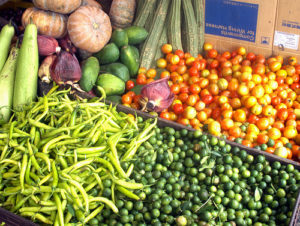 It was the digital economy, now it is the experience era. Games, gamification, engagement, consumer journey, service design, virtual reality, emotions… All related to experience. Until now. I’ve never watched the movie Soylent Green, but my mum did and I remember that the story was quite horrible and disgusting. Let me tell you what Soylent Green is about. As there was no food in the world, people were eating a kind of powdered food made of other people’s bodies. Nice. Now, just look for Soylent in the Internet. It looks like the movie is not too far from reality – the only difference is the ingredient. But why?
It was the digital economy, now it is the experience era. Games, gamification, engagement, consumer journey, service design, virtual reality, emotions… All related to experience. Until now. I’ve never watched the movie Soylent Green, but my mum did and I remember that the story was quite horrible and disgusting. Let me tell you what Soylent Green is about. As there was no food in the world, people were eating a kind of powdered food made of other people’s bodies. Nice. Now, just look for Soylent in the Internet. It looks like the movie is not too far from reality – the only difference is the ingredient. But why?
Soylent is a powdered food, made of different whole grains and natural ingredients. The packaging is very clean, the content has a “white” colour – very pale, very clean, very minimalist. There is also another brand, Huel – the same purpose, same style, same minimalist way of life. What is happening with our relationship with food? As some of my friends mentioned, this would work if people really don’t feel any pleasure while eating – or they just “eat for survival”. Can it be a new life style?
Maybe people are taking this idea of minimalist too serious – or maybe they are not. Minimalists argue that they don’t give meaning to things and they try not to excess anything. The idea of “less is more” is taken as a ritual. But what about powdered food? And why using a powdered version? A true minimalist would not buy the food, but he/she would grow it somewhere at home or in the street, right? The minimalist diet is quite similar to the powdered food thing: vegetables. But wait, I’m not saying that powdered food is part of the minimalist diet because I don’t have any reference about that! What I mean about those questions is that it looks like we are heading towards a minimal type of experience – in one way or the other.
Perhaps now people are feeling the pressure to change their life styles without hurting the environment. It is like a type of symbiosis between us and the Earth. As far as I know, it looks like the minimalist lifestyle condemns materialism. And because of that, it is possible that people that want to “buy” a certain life style would feel like buying powered food. It is hard to know without a proper research – but something is definitely going on.
Why is it so hard to find a balance? We all know that we should decrease our consumption of beef for example. Maybe this minimalist style is a reaction to all of it as a way to pay the bill in the name of everyone in the planet. Can we experience enough? And when is it enough? What is missing is a balance. And it looks like our relationship with food is changing. This can be seen since growing vegetables at home (or through the Internet) to eating powdered food. What is the best option? And how can design transform our food relationship? Cultural aspects, for example, are totally related to food. Food waste is also another problem.
Another way to see this is through the movement of Lowsumerism – or just decreasing consumption of things that you might not need. Yet, the challenge is to take it not as radical life style, but knowing what is enough. Experiences, then, should be enough – and satisfying the way they are.
It looks like the minimalist life style is more a reaction than a particular “era”. Is it the best way to solve the problem? We don’t know – but it is worth studying it. I will keep reading more about it. :)
Read more:
photo credit: Vegetables at the market via photopin (license)